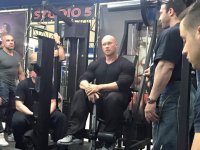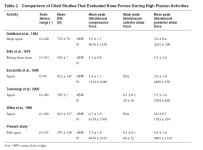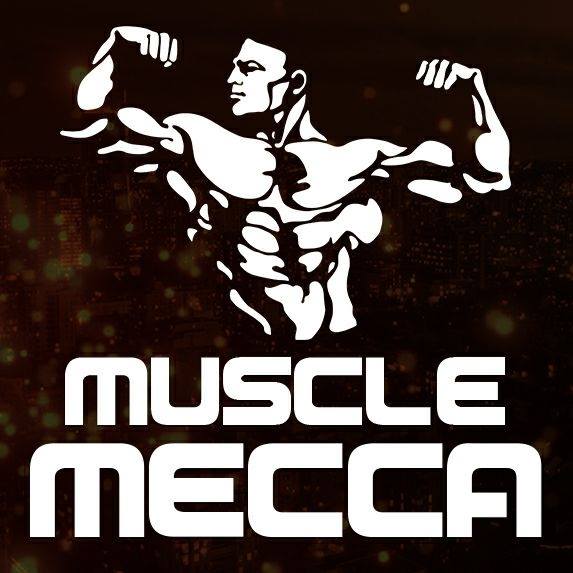tim290280
Mecca V.I.P.
VIP
- Joined
- Jul 13, 2006
- Messages
- 9,163
- Points
- 38
The problem with squatting depth is that there are a number of things happening to the joint and they can vary depending on how the squat is performed. As long as the knees and hips rise as one and the weight is not shifted forward (or sideways) onto the toes then you have a decent squat that will keep the knee within acceptable force parameters.
There are few things to consider with squatting depth: shear forces on the ligaments and tendons, compressive forces on the knee cartilages, relative loading, and excessive depth. Excessive depth is easy; go too deep and your hamstrings and calves meet and begin to lever the knee apart, not good! Relative loading is also reasonably simple; you can squat more weight through a shorter ROM and will put greater stressors on the knee than is typically measured in studies.
Meniscus starts to get damaged at 25MPa. Squatting with bodyweight is 4-5MPa, walking can get as high as 14MPa (wonder what running does?!)

Next post will be on the ligament forces.
There are few things to consider with squatting depth: shear forces on the ligaments and tendons, compressive forces on the knee cartilages, relative loading, and excessive depth. Excessive depth is easy; go too deep and your hamstrings and calves meet and begin to lever the knee apart, not good! Relative loading is also reasonably simple; you can squat more weight through a shorter ROM and will put greater stressors on the knee than is typically measured in studies.
Meniscus starts to get damaged at 25MPa. Squatting with bodyweight is 4-5MPa, walking can get as high as 14MPa (wonder what running does?!)
Tibiofemoral Joint Contact Force in Deep Knee
Flexion and Its Consideration in Knee Osteoarthritis
and Joint Replacement
Takeo Nagura,1 Hideo Matsumoto,1 Yoshimori Kiriyama,1 Ajit Chaudhari,2 and Thomas P. Andriacchi2
The aim of the study was to estimate the tibiofemoral joint force in deep flexion to consider how the mechanical load affects the knee. We hypothesize that the joint force should not become sufficiently large to damage the joint under normal contact area, but should become deleterious to the joint under the limited contact area. Sixteen healthy knees were analyzed using a motion capture system, a force plate, a surface electromyography, and a knee model, and then tibiofemoral joint contact forces were calculated. Also, a contact stress simulation using the contact areas from the literature was performed. The peak joint contact forces (M ± SD) were 4566 ± 1932 N at 140 degrees in rising from full squat and 4479 ± 1478 N at 90 degrees in rising from kneeling. Under normal contact area, the tibiofemoral contact stresses in deep flexion were less than 5 MPa and did not exceed the stress to damage the cartilage. The contact stress simulation suggests that knee prosthesis having the contact area smaller than 200 mm2 may be problematic since the contact stress in deep flexion would become larger than 21 MPa, and it would lead damage or wear of the polyethylene.
Contact stresses in the knee joint in deep flexion
Ashvin Thambyah, James C.H. Goh∗, Shamal Das De
Department of Orthopaedic Surgery, National University of Singapore, Singapore 119074, Singapore
Received 25 August 2004; accepted 2 September 2004
Abstract
The contact stresses in the knee that arise from activities involving deep flexion have not been given due consideration in view of social and cultural practice amongst many Asians that frequently cause the engagement of these activities. Excessively large stresses (>25MPa) can cause cartilage damage and may be the precursor to the development of degenerative disease of the joint. In this study, forces in the knee derived from previous studies of human walking and squatting were applied to five cadaver knees that underwent quasi-static mechanical testing. This was conducted using a materials-testing machine and a custom-made apparatus that allowed secure and consistent loading of the knee specimen in flexion beyond 120◦. A thin-film electronic pressure transducer was inserted into the cadaver tibiofemoral joint space to measure force and area. Throughout the various positions simulating specific phases of walking, it was found that stresses peaked to 14MPa (standard deviation was 2.5MPa). In deep flexion, the peak stresses were significantly larger by over 80%, reaching the damage limits of cartilage. The results from this biomechanical study suggest that the adequacy of articular cartilage to support loads in the knee joint during deep flexion may be questionable.
So if walking and running are higher knee compressive forces than those in the parallel and ass to grass squat with bodyweight then squatting with good form and progressive overload techniques shouldn’t be harmful to the meniscus (within reason). Of course extra weight is going to impact upon these forces greatly. Where the forces get big is when you add weight, and it is much easier to add big weights to shallower depths of squatting. You also tend to have slower “hypertrophy” of the tendons, ligaments and cartilage than in muscles which further exacerbates the issue of adding big weights.Patellofemoral joint kinetics during squatting in collegiate women athletes
George J. Salem, and Christopher M. Powers
Objective. To characterize the biomechanics of the patellofemoral joint during squatting in collegiate women athletes.
Design. Repeated measures experimental design.
Background. Although squatting exercises are required components of most intercollegiate resistance-training programs and are commonly performed during rehabilitation, the effects of various squatting depths on patellofemoral joint stress have not been quantified.
Methods. Anthropometric data, three-dimensional knee kinematics, and ground reaction forces were used to calculate the knee extensor moment (inverse dynamics approach) in five intercollegiate female athletes during squatting exercise at three different depths (approximately 70°, 90° and 110° of knee flexion). A biomechanical model of the patellofemoral joint was used to quantify the patellofemoral joint reaction force and patellofemoral joint stress during each trial.
Results. Peak knee extensor moment, patellofemoral joint reaction force and patellofemoral joint stress did not vary significantly between the three squatting trials.
Conclusions. Squatting from 70° to 110° of knee flexion had little effect on patellofemoral joint kinetics. The relative constancy of the patellofemoral joint reaction force and joint stress appeared to be related to a consistent knee extensor moment produced across the three squatting depths.
Relevance
The results of this study do not support the premise that squatting to 110° places greater stress on the patellofemoral joint than squatting to 70°. These findings may have implications with respect to the safe design of athletic training regimens and rehabilitation programs.

Next post will be on the ligament forces.












 If you are going to make a statement at least know the history:
If you are going to make a statement at least know the history:




 ) if Im not to deep down in a squat. Before my injuries it was all the way down for all my weights.
) if Im not to deep down in a squat. Before my injuries it was all the way down for all my weights.



